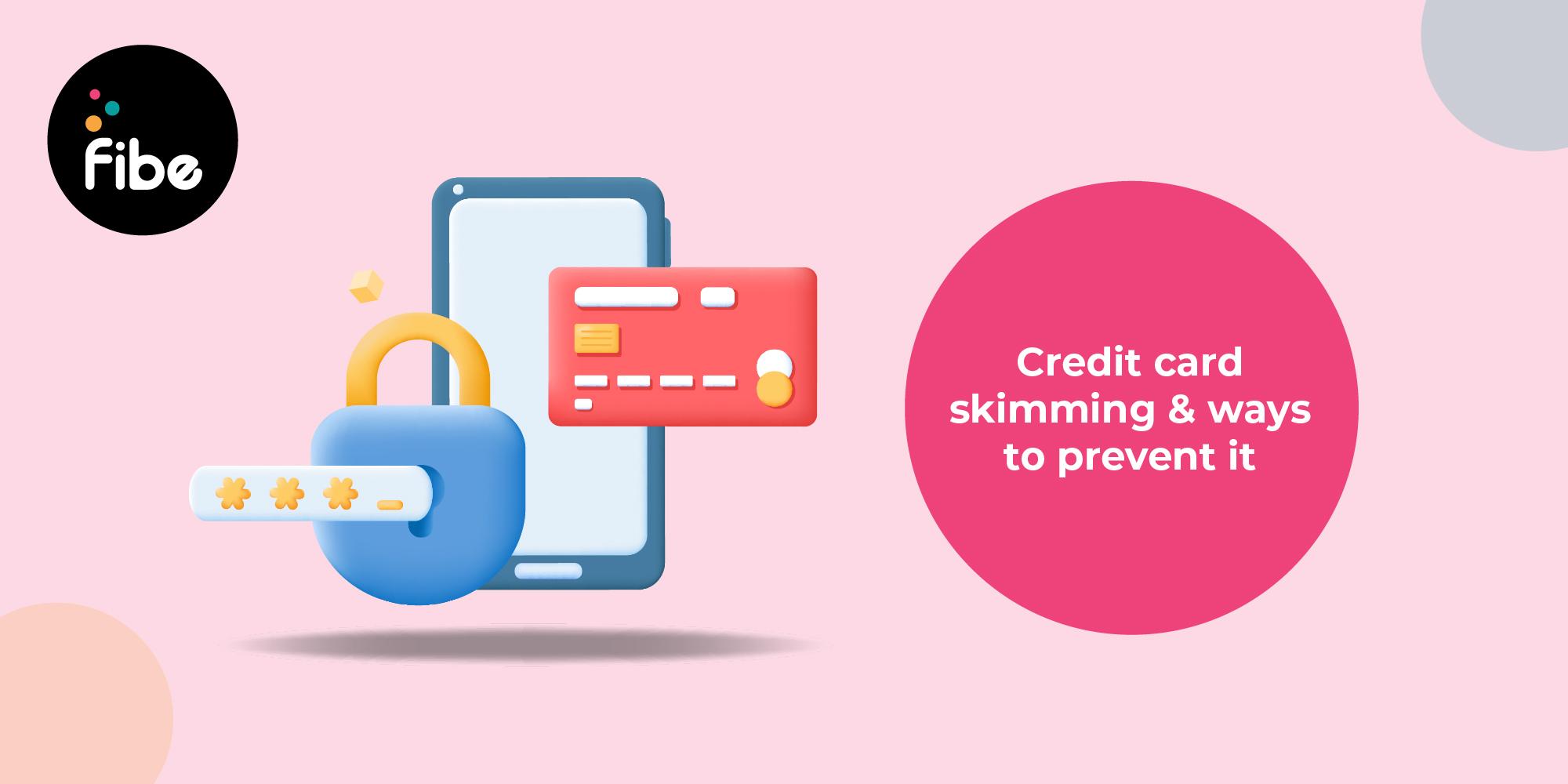- Home
- Blogs
- Credit Card
- What Is Credit Card Skimming
What is Credit Card Skimming? Everything You Need to Know
- Updated on: 13 Jun 2024

Credit card skimming is becoming a growing threat in today’s digital world. Scammers use a physical device called a skimmer to steal your credit card details. With your sensitive information at hand, they carry out fraudulent transactions using your card.
To know about how skimmer works, what you can do to prevent it and more, read on.
It is a device that scammers often fit over the ATM slot or a merchant’s credit card terminal (PoS machine) to capture details present in the magnetic strip of your card. These details include the following:
Using these details, fraudsters can make unauthorised payments using your card, which ultimately results in financial loss.
Credit card skimming equipment generally blends in with ATM and POS machines and is not easily detectable. But knowing where scammers use them often helps you stay vigilant. Here are some common places where you may find these devices:
Here, skimming devices are often found at the point-of-sale terminal, which thieves use to create counterfeit cards.
The skimming devices are fitted in the card slot to capture your details. Unscrupulous individuals may also fix a small camera near the number pad in the ATM to capture your PIN. Though this practice is not technically referred to as credit card skimming, be aware of it when you use in ATMs.
Sometimes, POS terminals at retail shops and restaurants may have skimming devices. A member of a skimming ring may secure employment at such stores to carry out this type of fraud.
Here, the miscreant oversees you punching the code in the machine while posing as the next person in the queue to use the machine.
If your credit card statement shows an unauthorised transaction, you may be a target of fraud. By carrying out skimming of credit cards, fraudsters can perform these illegal activities:
By capturing your personal and card details, scammers can use the details to duplicate your account or take a loan in your name.
The thieves can also use your card details to create a counterfeit credit card and share it with other parties.
Scammers can also complete transactions from online or physical stores using your credit card details.
Although they blend well, credit card skimming equipment generally sticks out a little beyond the panel. If you find that an additional part is jutting out of the panel or if a part of the panel is loose, it may be a skimming device. Check the surroundings to avoid using these devices.
Here are some other ways you can prevent credit card skimming:
Most credit card companies now issue chip-based credit cards. These offer a higher degree of security compared to one with a magnetic strip. If you still have a card with a magnetic strip, contact the issuer to replace it.
Many credit cards now have WiFi-like icons, which means you can use them for contactless payments. Since there is no need to insert your card into any device, contactless transactions are comparatively safer.
Contactless credit cards offer better protection against traditional skimming techniques. These cards use a combination of encryption and verification to keep your credit card details.
However, scammers are also upgrading their technology to bypass these security measures and steal your data. Some have been using specially created equipment that intercepts the communication between your card and the payment terminal to steal the details.
That said, card issuers and payment networks constantly monitor these emerging threats and update their security measures to mitigate them.
An important aspect of keeping your details and finances secure is choosing the right issuer and card. With the Fibe Axis Bank Credit Card, you can ensure the best security as it is India’s first numberless card. It’s a RuPay card that you can link to your UPI ID, which helps eliminate the possibility of misuse through your card details.
Additionally, it is a lifetime free credit card, so you need not pay any joining or annual fees. You can also enjoy cashback of up to 3% on every transaction, as well as other perks. Download the Fibe Personal Loan App or register on our website to apply for this card now!
You can prevent credit card skimming by opting for the following strategies:
It refers to a form of theft where a miscreant uses a device to read and store your personal and credit card details. This information is used to carry out identity fraud and to make unauthorised purchases.
If you suspect skimming, block your card immediately and contact the issuer to inform them.
Yes. Chip-based credit cards are more secure than those having magnetic chips and can help prevent skimming.
No, because you don’t have to insert or swipe your card in a compromised machine. However, some scammers are using devices that can intercept the contactless transfer and steal your information.